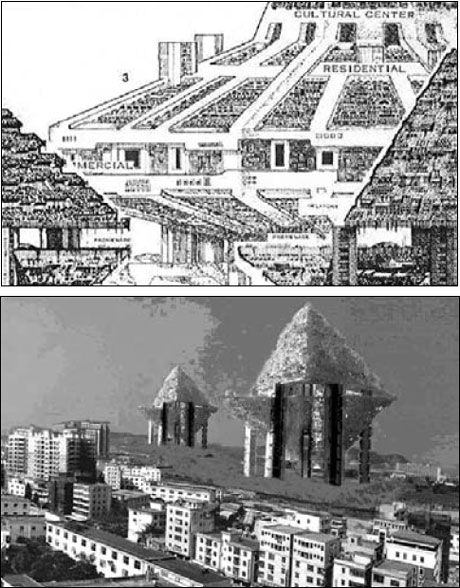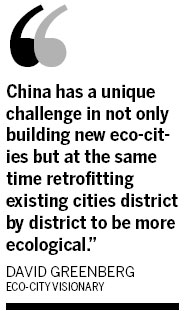Economy
Future cities face big ecological challenges
(China Daily)
Updated: 2010-06-21 07:57
 |
Large Medium Small |

Editor's note: The latest report from the China Mayors' Association shows that around 50 percent of Chinese people will live in cities by 2020, and this figure will grow to 75 percent by 2050. During the past 60 years, China's rate of urbanization has accelerated rapidly, from 10.6 percent in 1949 to 46.59 percent in 2009. The number of cities grew from 132 at the beginning of 1949 to 655 by 2009. When society is heading toward a better future at full speed, people care more about what kind of cities they should move into. The concept of eco-cities is being heralded as the best way forward to limit consequent damage to the environment of unbridled urbanization. To reveal more about the notion and China's challenges in this respect, China Business Weekly reporter Hu Yuanyuan spoke to David Greenberg, an US expert in planning for a greener urban future.
Q: What is your definition of an eco-city?
A: An eco-city should be a comprehensive, sustainable environment created for the needs of commerce and production in harmony with a lifestyle for all. It includes green plants within its structure in order to relate properly to the green agriculture and nature that surrounds it. Its design should concentrate on the four basic elements affecting CO2 emissions - transportation, energy, waste management and water - keeping in mind its relevance in the foreseeable future. The eco-city should be designed with the matrix of low carbon structural concepts in harmony with low carbon people. An eco-city is a smart city not just a pretty one.
No existing city on this planet comes close to this concept. Most cities in America were designed for big egos, big cars and houses and big buildings. None of these elements should play a role in the eco-city of the future. We can no longer afford traditional cities. They are not appropriate or sustainable.
Whole new eco-cities must be designed and districts of existing cities must be rebuilt and modified along these same principles.
The new eco-city will look and function quite differently from anything we know now. It will most likely be a rather huge megastructure, sometimes up in the air above the land for from 50,000 to 500,000 people living and working in a totally mixed-use single complex.
Q: What are China's major challenges in building more eco-cites?

A: China has a unique challenge in not only building new eco-cities but at the same time retrofitting existing cities district by district to be more ecological. The biggest problem with this direction is that there are few if any projects around the world that could be copied or useful. China will have to create a new paradigm or concept that is truly relevant for the 21st century including special systems for transportation, energy, water and waste as well as a new harmonious low carbon lifestyle. Again, there are no existing eco-cities on this planet, which could be considered sustainable on the level that would be needed.
What this means is that China will have to lead the way for itself and the world in the creation of the eco-city. The West is too busy these days holding on to their old cities and in some cases learning how to shrink them.
Q: How does a nation address these challenges based on your experience?
A: My experience with the eco-city concept began at the studios of the Italian visionary Paolo Soleri while I was living and working in Arizona during the early 1960s. He called this city of the future an Arcology (see drawing). This past winter there was a major exhibit of his urban eco-city ideas in Beijing. He got me into urban design.
Also shown in the drawing is an adaptation of Soleri's Hexahydran design I had proposed earlier this year for two 50,000-person satellite cities for the Pingshan district of Shenzhen. Note that agriculture is provided both below and above.
I have spent a lot of time going to eco-city conferences and forums all over China over the last several years hosted by many local governments and the central government. Though they pay a lot of attention to the eco-city, the Eco Summit 2007 Beijing summed up the problem in the approach. It was very big (1,800 participants). Experts from all over China and the world were invited. Unfortunately only about seven were not scientists, engineers or architects. They were all specialists but the problems and the solutions are very big and very complex.
(China Daily 06/21/2010 page20)